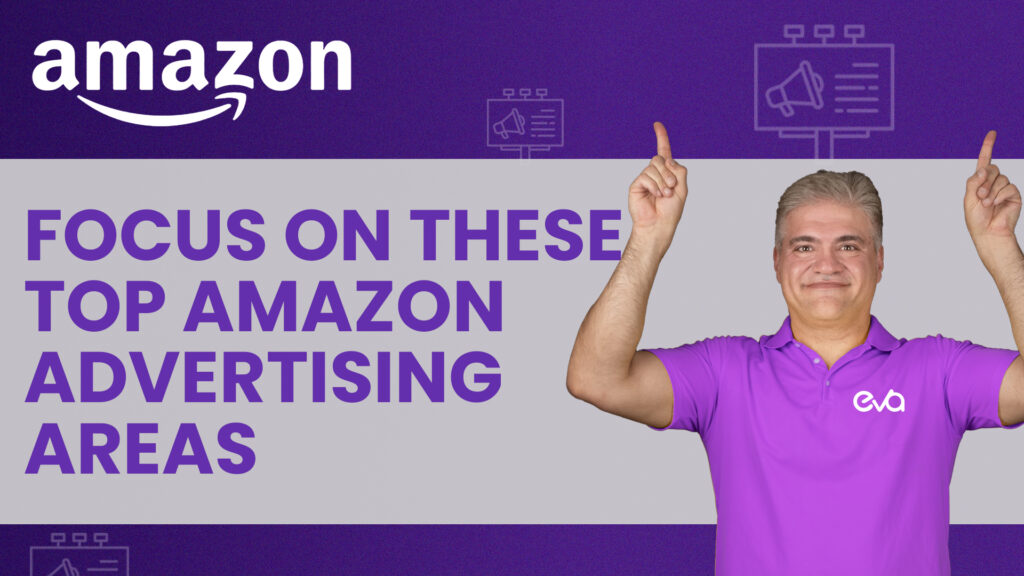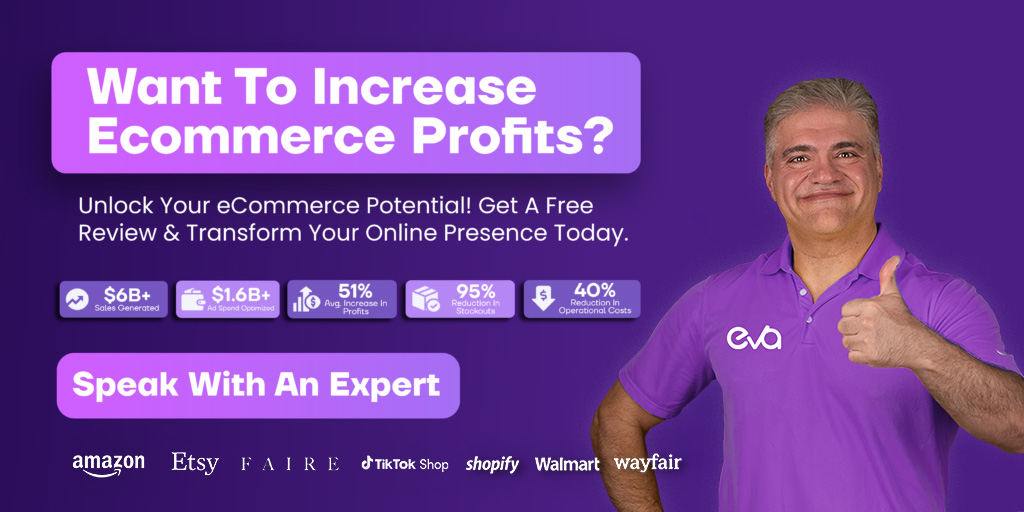Advertising on Amazon can feel like navigating a labyrinth. With so many moving parts, it’s easy to get lost.
But don’t worry; we’ve got you covered. In this comprehensive guide, we’ll explore the top areas to focus on for successful Amazon product advertising, drawing insights from an expert advertising session.
Plus, we’ll show you how Eva Commerce’s AI-powered platform can supercharge your advertising efforts.
Table of Contents
Understanding Amazon Advertising Strategy
Amazon advertising isn’t just about setting up a few ads and hoping for the best. It’s a complex system that requires a well-thought-out strategy. Here’s a breakdown of the key areas you need to focus on:
- Keyword Isolation
- Sponsored Display Strategy
- Prime Day PPC Tips
- Data-Driven Decisions
Keyword Isolation: Maximizing Efficiency
Keyword isolation is a technique where you manage keywords across different match types—broad, phrase, and exact. This allows you to control where your ads appear and optimize for cost-effectiveness.
- Broad Match: Casts a wide net, showing your ads for a variety of related search terms.
- Phrase Match: Targets search terms that include your exact keyword phrase.
- Exact Match: Most specific, showing ads only for the exact search term.
By isolating keywords, you can better manage bids and ensure your ads appear in the most relevant searches.
For instance, moving high-performing search terms from auto campaigns to manual exact match campaigns can enhance performance and control.
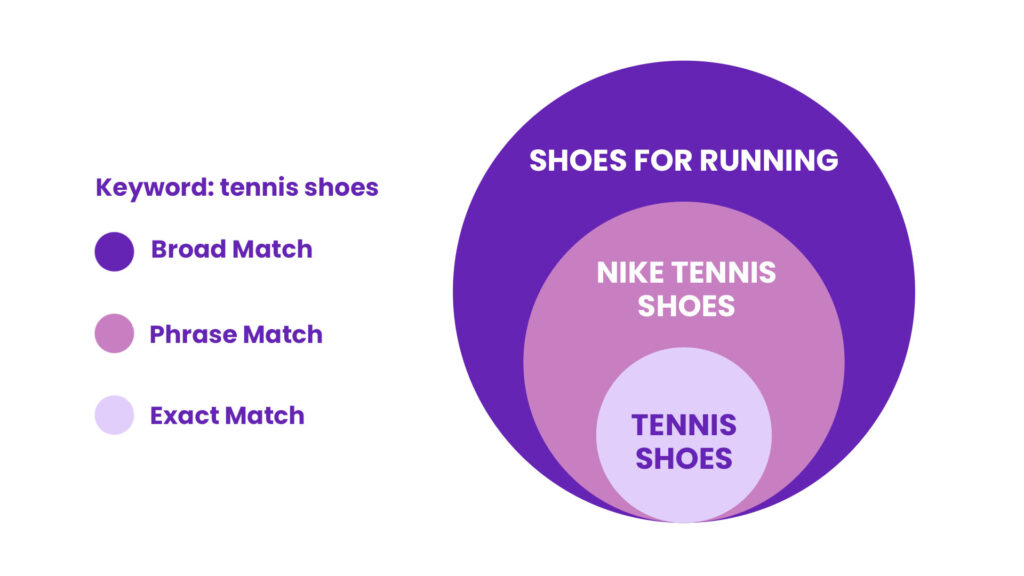
To delve deeper, let’s consider an example. Suppose you sell eco-friendly dog toys. Using broad match, your ad might appear for searches like “eco-friendly pet products” or “organic dog toys.”
While this increases visibility, it may not always lead to conversions.
By analyzing performance, you can identify high-converting search terms like “natural rubber dog toy” and move these to exact match, ensuring your ads appear only for this precise search, boosting relevance and conversion rates.
Sponsored Display Strategy: Broadening Your Reach
Sponsored Display ads are crucial for reaching potential customers both on and off Amazon.
They allow you to target audiences based on their shopping behavior, ensuring your ads are seen by people who are more likely to convert.
- Retargeting: Show ads to people who have viewed your product but didn’t purchase.
- Product Targeting: Display ads on product detail pages of similar or complementary products.
These strategies help keep your brand top-of-mind for shoppers and can significantly boost your conversion rates.
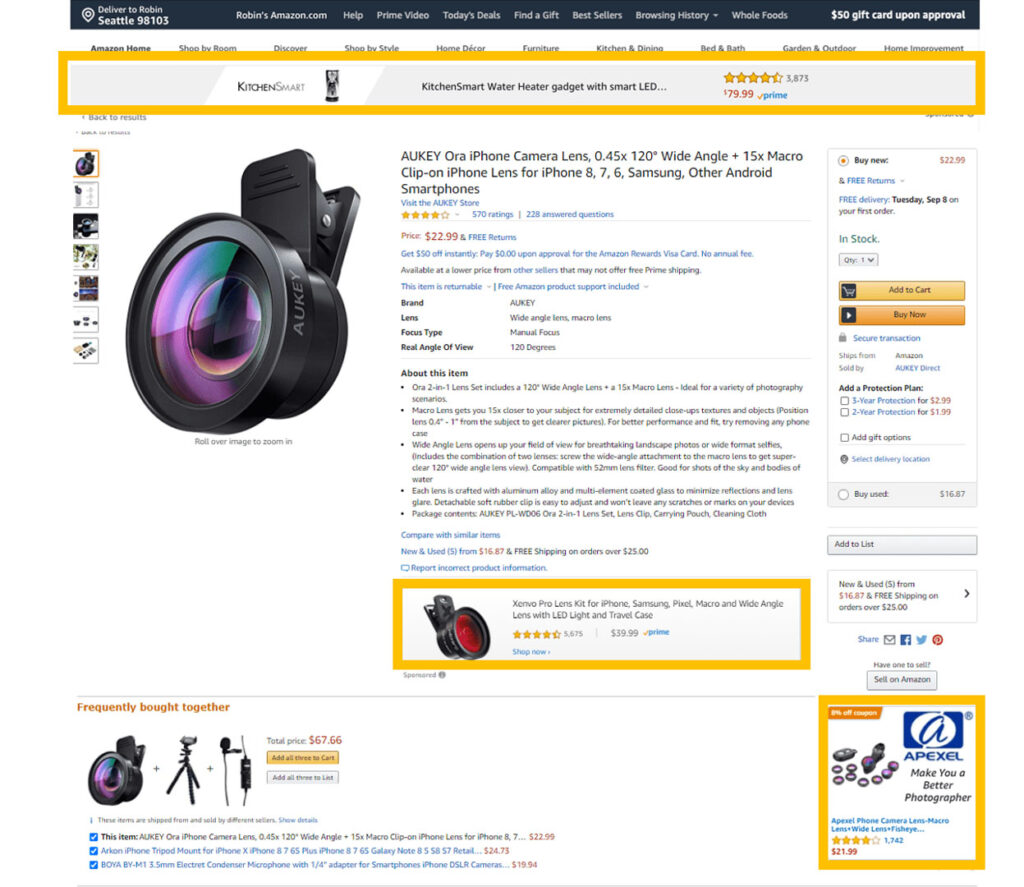
For instance, if someone viewed your eco-friendly dog toy but didn’t buy, a retargeting ad can remind them of the product, potentially bringing them back to complete the purchase.
Similarly, product targeting ads can place your product on the pages of complementary items, like dog food or dog grooming tools, capturing the attention of customers already interested in related products.
Prime Day PPC Tips: Capitalizing on High Traffic
Prime Day is one of the biggest sales events on Amazon, and having a solid PPC strategy is essential to capitalize on the increased traffic.
- Budget Management: Increase your budget leading up to Prime Day to ensure your ads run throughout the event.
- Bid Adjustments: Anticipate higher CPCs and adjust your bids accordingly.
- Promotions: Use deals and discounts to attract more clicks and conversions.
Preparation is key. Ensure your listings are optimized, and your ads are ready to capture the influx of shoppers.
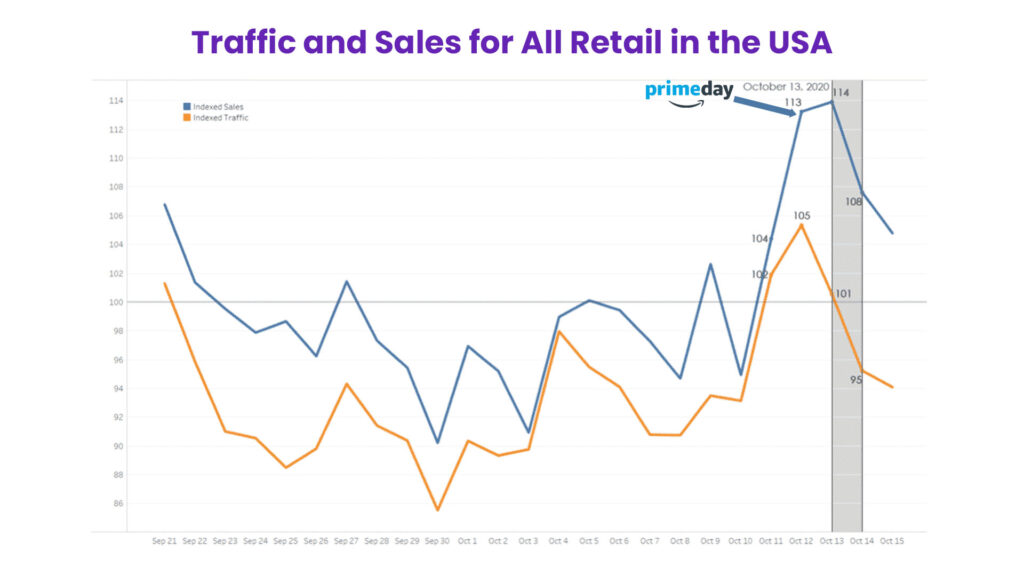
During Prime Day, consumers are on the hunt for deals. This makes it an ideal time to offer special promotions and discounts.
For example, if your usual price for the eco-friendly dog toy is $25, consider offering a 20% discount. Highlight this in your ads to attract deal-seekers.
Also, adjust your bids to stay competitive, as CPCs tend to rise due to increased competition.
Data-Driven Decisions: The Heart of Successful Advertising
Making data-driven decisions is essential for optimizing your Amazon advertising strategy. This involves regularly analyzing performance metrics and adjusting your campaigns based on insights.
- Conversion Rates: Monitor how well your ads are converting clicks into sales. Low conversion rates might indicate a need for better keyword targeting or improvements to your product listings.
- Cost-Per-Click (CPC): Keep an eye on your CPC to ensure you’re not overspending on keywords that aren’t converting well.
- Return on Ad Spend (ROAS): Calculate your ROAS to understand the profitability of your ad campaigns.
Using tools like Eva Commerce can greatly enhance your ability to make informed decisions.
Eva’s AI platform provides real-time insights, helping you adjust your strategies for maximum efficiency and profitability.
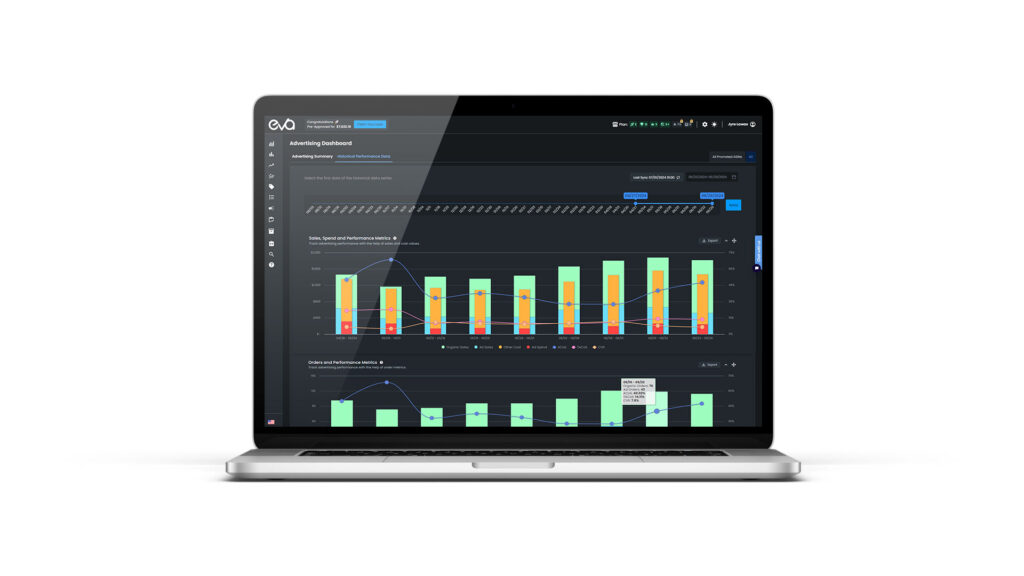
How Eva Can Help
Eva Commerce is a leading eCommerce technology company dedicated to helping brands achieve profitable growth on Amazon, Walmart, and other marketplaces.
Our unique AI platform, combined with expert support, enables brands to optimize their advertising strategies and make data-driven decisions.
Eva’s AI platform is the only context-aware advertising solution that integrates inventory levels, conversion rates, and profitability metrics across all marketplaces, not just Amazon.
Our experts analyze this data to determine the best actions for your advertising campaigns, ensuring maximum efficiency and ROI.
As an Amazon Advanced Partner and Walmart Strategic Solution Partner, Eva also collaborates with industry giants like TikTok, eBay, Shopify, Google, Meta, Wayfair, Faire, and more.
By focusing on profitability, Eva ensures sustainable growth and helps brands invest in the most effective multimedia mix for their marketing efforts.
Ready to take your Amazon business to the next level? Book a free consultation with Eva Commerce.
Advanced Strategies for Amazon Advertising
Now that we’ve covered the basics, let’s dive into some advanced strategies that can take your Amazon advertising to the next level.
Leveraging Amazon Brand Analytics
Amazon Brand Analytics provides a wealth of data that can inform your advertising strategy. This includes:
- Search Term Reports: Identify which search terms are driving the most traffic to your products.
- Market Basket Analysis: Understand which products are frequently bought together with yours.
- Item Comparison Reports: See how your products compare to competitors in terms of views and purchases.
Using this data, you can refine your keyword targeting, optimize your product listings, and develop more effective ad campaigns.
Implementing A/B Testing
A/B testing involves running two versions of an ad or product listing to see which performs better. This can be particularly useful for:
- Ad Copy: Test different headlines, descriptions, and calls-to-action to see which version drives more clicks and conversions.
- Product Images: Experiment with different images to determine which ones resonate most with your audience.
- Pricing Strategies: Test different price points to find the optimal price that maximizes sales and profitability.
By continually testing and optimizing, you can improve the effectiveness of your Amazon advertising campaigns over time.
Utilizing Amazon DSP
Amazon Demand-Side Platform (DSP) allows you to programmatically buy display and video ads both on and off Amazon. This can help you reach a broader audience and drive more traffic to your product listings.
- Audience Targeting: Use Amazon’s rich data to target specific audience segments based on their shopping behavior and interests.
- Retargeting: Show ads to people who have previously viewed or purchased your products, keeping your brand top-of-mind.
Creative Optimization: Use dynamic creative optimization to tailor your ads to different audience segments, improving relevance and engagement.
FAQs
Keyword isolation involves managing keywords across different match types (broad, phrase, exact) to optimize ad performance and control costs.
Sponsored Display ads target audiences based on their shopping behavior, appearing both on and off Amazon to reach potential customers effectively.
Increase your budget, adjust bids for higher CPCs, and use promotions to attract more clicks and conversions during Prime Day.
Eva Commerce’s AI platform integrates key metrics across marketplaces, optimizing ad strategies for maximum efficiency and ROI.
Broad match keywords cast a wider net, allowing your ads to appear for a variety of related search terms, increasing visibility.
Exact match keywords are highly specific, ensuring your ads appear only for the exact search term, which can lead to higher conversion rates.
Proper budget management ensures your ads run throughout Prime Day, capturing the increased traffic and maximizing sales.
Retargeting shows ads to people who have viewed your product but didn’t purchase, encouraging them to return and buy.
Anticipating higher CPCs and adjusting your bids accordingly ensures your ads remain competitive and visible during the event.
Promotions attract more clicks and conversions, making your ads more effective and boosting sales during high-traffic events like Prime Day.
Conclusion
Mastering Amazon advertising requires a strategic approach to keyword management, ad types, and data-driven decisions.
By focusing on these areas, you can optimize your campaigns for maximum efficiency and profitability.
And with Eva Commerce’s advanced AI platform, you have the tools and support you need to elevate your advertising efforts and achieve sustainable growth.

